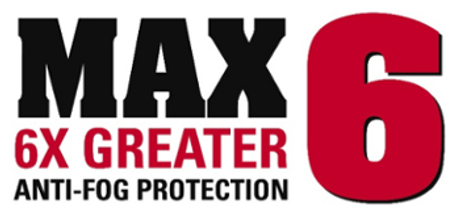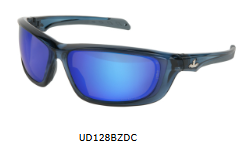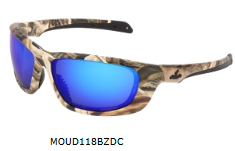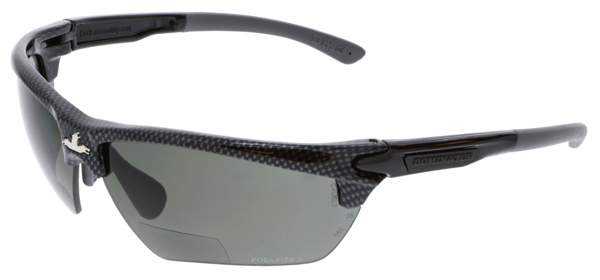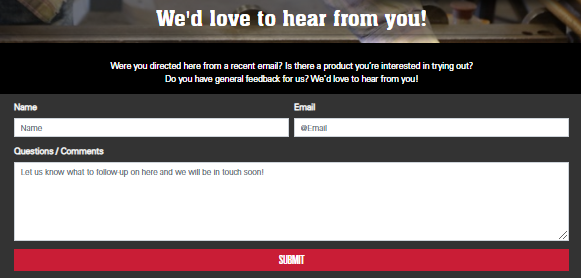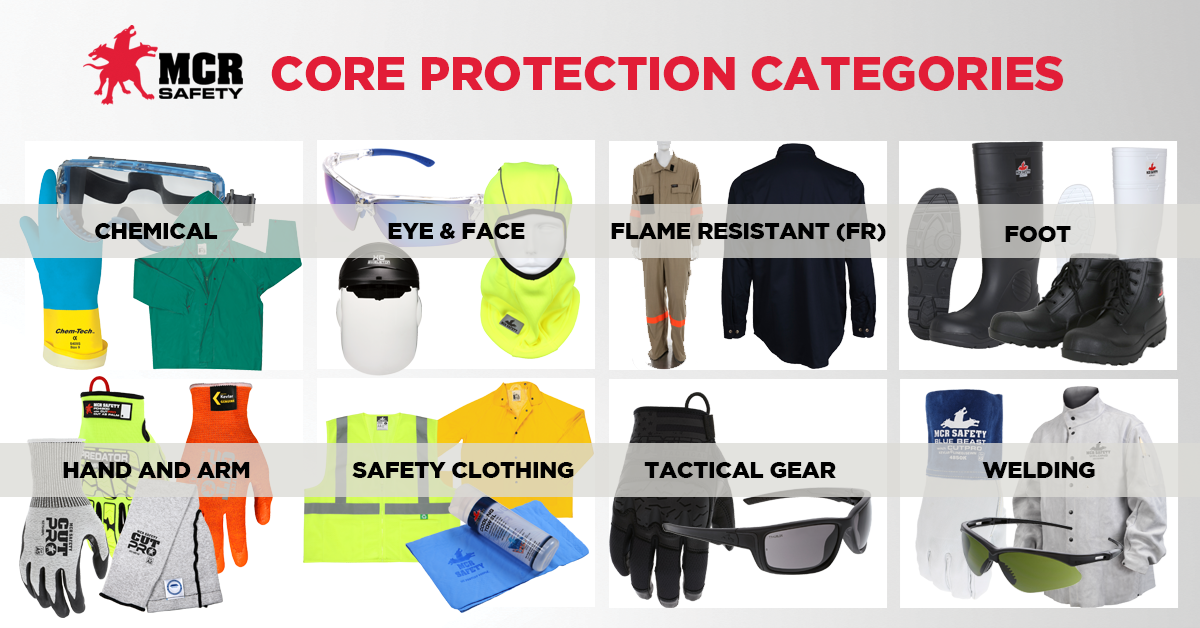Revolutionizing Safety Glass Technology: From Scratch Resistant to Polarized Anti-Fog
Posted by Anthony Webb on Oct 27th 2024
Eye protection is critical in harsh industrial environments. Welding, UV radiation, dust, flying metal fragments, and splashing chemicals are all hazards that can affect the eyes. These hazards can permanently damage the eyes, reducing vision or even causing lifetime blindness.
Of course, not all eye protection is created equal. We’ve come a long way from workers sporting big box eyewear styles and simple-looking goggles. Today, technology has allowed us to push the needle with the types of safety glasses we can offer users. We now incorporate advanced scratch-resistant coating, anti-fog technology, and combinations of both. This article will highlight the technology allowing high performance in our safety glass and eye protection lineup.
Scratch Resistant Technology
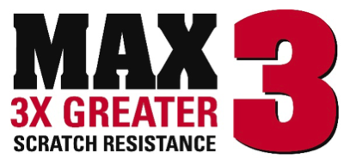
Do glass lenses need anti-scratch coating? While safety clothing and work gloves can remain functional, even with scuffs or scratches, a small scratch on a safety glass can lead to visual distraction and drastically reduce visibility. Since the intent of protective eyewear is to keep your eyes safe, the glasses must not scratch.
In a 2013 eyewear survey, 59% of all surveyed listed scratch resistance as the #2 most crucial buying decision when selecting safety glasses. A year later, Max 3 scratch-resistant glasses became available, offering wearers 3X greater scratch resistance. Now, over 15 styles incorporate this technology.
MAX3 scratch-resistant glasses can stand up in the harshest working environments you are likely to meet on the job - MAX3 in action. We do not recommend rubbing your face with steel wool, but if you did, your glasses with MAX3 scratch-resistant technology would look brand-new.
Anti-Fog Technology
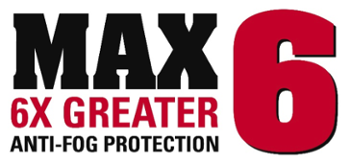
In the same survey mentioned above, 60% of all surveyed listed fogging as the #1 most crucial buying decision when selecting safety glasses. Fog is not going to hurt your eyes, but it will hurt your visibility, which can cause severe accidents and injuries. In industries such as machine shops and metalworking, users go in and out all day to retrieve materials, and fogged glasses are a genuine concern.
There are a couple of reasons why glasses fog:
- Quick-rising temperatures (as when walking into a heated building on a snowy day)
- There are two common examples of humid air being aimed directly at glasses, as when wearing a mask or respirator.
The solution many people use is anti-fog wipes. The only downside to these is that your glasses need to be reapplied every time your glasses fog up. This is a perfect solution … once or twice. But if you’re regularly encountering significant differences in temperature or wearing a respirator daily, it’s not a long-term fix. Moreover, if you are responsible for several people, multiply the several minutes it takes to de-fog glasses by the number of times it occurs by the number of employees, and you are losing a significant amount of productivity, even if nobody gets hurt when they are unable to see. And that’s a big if.
Enter anti-fog technology. Originally developed by NASA during Project Gemini to keep space suit visors fog-free (and it’s hard to imagine any climate more demanding than the vacuum of space), anti-fog agents prevent condensation from forming.
Anti-fog coatings work to various degrees, and our MAX6 technology is some of the best, offering six times the anti-fog performance of standard fog-resistant styles. Where standard glasses can take minutes to clear and anti-fog glasses can take 60 seconds or more, glasses with MAX6 technology clear in 10 seconds or less when they fog up. Max 6 technology is incorporated into the lens during manufacturing, so there is no need to worry if the coating needs to be reapplied!
Scratch Fog Resistant Safety Glasses
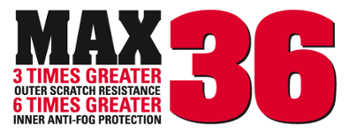
Who would ever think up a technology with both Max 3 and Max 6? You guessed it; we take innovation rather seriously when it involves the safety and well-being of today’s modern workers.
MAX36™ lenses are flow coated, also known as "dual coated" lenses in which we apply our MAX3™ to the outside lens and then MAX6™ to the inside lens. Imagine having the most durable safety glasses yet not worrying about fogging up while on the job site. MAX36™ does just that! MAX3™ protects the outside of the lens from flying metal, debris impact, and scratches, while MAX6™ ensures fog-free visibility. If your job does not require moving from one extreme temperature to another, then MAX36™ is just the coating you need.
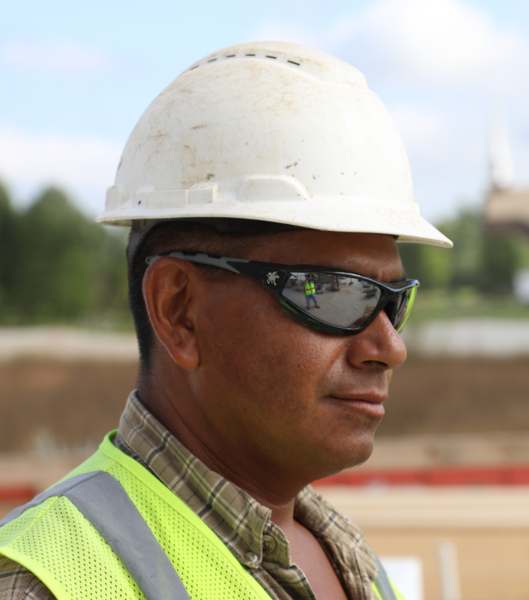
A worker wearing the RP219DC comes into the machine shop after grabbing some machinery from outside.
The RP219DC has an I/O Indoor Outdoor lens and incorporates MAX36 technology.
When you combine MAX3 anti-scratch technology and MAX6 anti-fog technology in MAX36 glasses, you have a pair designed for the most challenging and rugged working environment.
Polarized Scratch Resistant Safety Glasses
Most people associate polarized lenses with sunglasses primarily designed to protect your eyes from UV radiation. Since most sunglasses are polarized, it makes sense that people associate polarization with UV protection. But as it turns out, the UV protection from polarized glasses is about the same as standard sunglasses. So why bother with polarization?
In the end, this comes down to visibility. Standard sunglasses filter out UV rays by allowing less light to come through. Polarized glasses take a different route, one that takes advantage of our modern understanding of the physics of light.
Rays of light are three-dimensional, vibrating in all directions. When light is aligned in one particular direction, it’s said to be polarized. Aside from light coming directly from the sun, most of the light we see is polarized when it bounces off horizontal surfaces. The light reflecting off the surface of a lake, a highway, or a field of snow is all horizontally polarized. Polarized glasses take advantage of this, and only allow vertically oriented light. Like trying to force a button through a buttonhole the wrong way, horizontal light is reflected into the world instead of your eyes. This means less UV light damaging your vision and less glare from all those horizontal surfaces.
If you want to test this for yourself, you can. Hold a pair of polarized glasses in front of you and view a road or parking lot through them. Slowly rotate the glasses, so you’re holding them vertically, with one lens on top of the other instead of side by side. You’ll see a significant increase in glare when you do. If you don’t see a change, you may have purchased knockoff “polarized” glasses from a less reputable source. Only trust the best with your eyesight!
Military Polarized MAX3 + MAX6 + Polarized
Would the MCR Safety R&D team even entertain a wild idea of merging all three technologies into one style? The answer is absolutely yes, see for yourself! Two styles incorporate all three technologies, creating the ultimate safety glass.
Scratch-Resistant Bifocal Safety Reading Glasses
DM3H25GZDC
Common Questions
1. High end protective eyewear for outdoor sports?
Our Hulk HK4 series offers users high-end protective eyewear designed for outdoor sports. They feature advanced fog coatings and wire core adjustable temples and nose piece
2. What are the two types of protective eyewear?
The two main types are safety glasses and safety goggles. Safety glasses protect from frontal impact while goggles offer a sealed fit for more complete protection.
3. Who wears protective eyewear in NBA?
The most famous players ever to wear protective eyewear in the NBA are Kareem Abdul-Jabbar and Horace Grant, who famously wore protective goggles. Today, some players wear clear protective glasses post-injury or for vision correction.
4. What are the best anti fog glasses?
MCR Safety MAX6 styles are the most advanced we have, offering users 6X anti-fog performanc. These are popular in industrial and sports settings for their long-lasting clarity.
6. How effective is anti-fog coatings for glasses?
Anti-fog coatings can be highly effective when applied properly and maintained, significantly reducing condensation. However, effectiveness varies depending on the coating type and environment. We offer three tiers, with Duramass as our standard, UV-AF providing 3 times greater performance, and Max 6 as the top option with 6 times the performance.
7. Do anti fog glasses work?
Yes, anti-fog glasses prevent moisture buildup and enhance visibility in humid or temperature-fluctuating conditions. They are beneficial for industrial, medical, and athletic applications.
9. Can you get scratches off of glasses with anti glare?
Scratches on anti-glare lenses usually can’t be entirely removed and attempting to do so may damage the coating further. Lens replacement is often the best solution.
Protecting Eyes from Safety Hazards
MCR Safety has you covered on multiple levels for workers who need PPE to survive real-world conditions. Gloves and garments are great, but they’re the second line of defense at best when it comes to workplace hazards. The first is your sight. Being able to see trouble before it hits is the biggest factor in onsite safety, so don’t settle for less than the best.
Click the image below to leave us comments, questions, or concerns.
For over 45 years, MCR Safety has proven to be a world leader in gloves, glasses, and garments. Whether it's handling parts with nylon gloves, assembling products with polyester PU gloves, or working at a construction site, we are there, providing solutions to workplace hazards. It's all part of our commitment to protect people.
No matter your industry, we have the personal protective equipment you need.
Click the above image to be taken directly to our PPE online catalog.
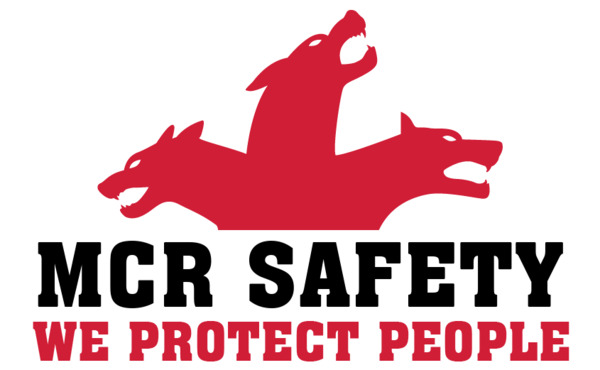
Learn more about MCR Safety by checking out our most recent video. For more information, browse our website, find a distributor, or give us a call at 800-955-6887.

